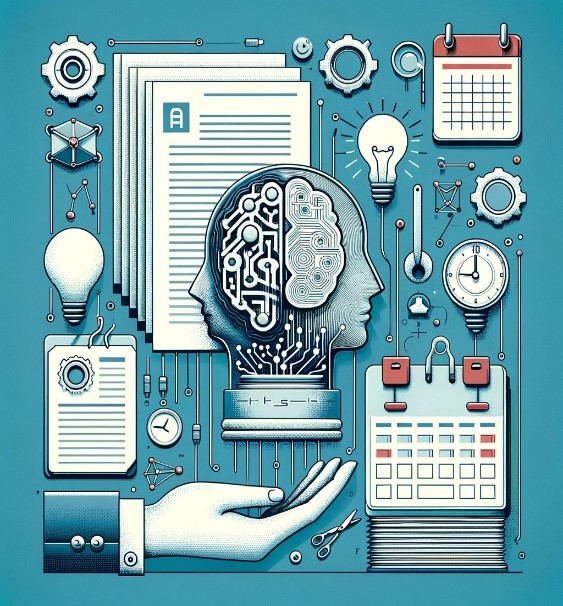New Government Guidance on AI Inventions: The Crucial Role of Documenting R&D


Introduction: The rapid evolution of Artificial Intelligence (AI) is not only reshaping industries but also redefining the landscape of intellectual property (IP) law. Recent government guidance on inventions created using AI has cast a spotlight on the importance of meticulous documentation throughout the research and development (R&D) process. This article delves into the nuances of this guidance and underscores why businesses, innovators, and legal professionals must prioritize detailed record-keeping in the age of AI-driven inventions.
Understanding the Guidance: The latest guidance from government agencies clarifies the legal stance on AI-assisted inventions, emphasizing the need for clear inventorship attribution and the protection of IP rights in the digital era. The guidance highlights a critical aspect: the documentation of R&D activities when AI is involved in the creative process. This move aims to ensure that inventions meet the criteria for patentability, attributing human ingenuity while acknowledging AI’s role in the innovation process.
The Evolution of Documentation’s Importance: From First to Invent to First to File.
The shift from the United States’ “first to invent” regime to the “first to file” system under the Leahy-Smith America Invents Act in 2013 marked a seismic change in patent law, radically transforming the role of documentation in the patenting process. This transition underscores the evolving importance of meticulously documenting the innovation process, especially in today’s AI-driven landscape. Let’s explore why documentation has become even more critical under the current legal framework.
- A Paradigm Shift in Patent Law: Under the “first to invent” system, inventors could potentially rely on lab notebooks and other records to prove they were the first to conceive an invention, giving them an edge in obtaining patent rights even if another party filed a patent application first. This system placed a premium on detailed records as a means to establish priority in invention.Contrastingly, the “first to file” regime prioritizes the act of filing a patent application over the date of invention conception. This fundamental change means that thorough documentation of the R&D process, while still crucial, now serves primarily to support the prompt and effective filing of patent applications, rather than to establish precedence in invention.
- Ensuring Timely and Comprehensive: Applications In the era of AI, where development cycles can be rapid and the line between human and machine contribution may blur, comprehensive documentation becomes indispensable. It not only aids in distinguishing human ingenuity in the invention process – a requirement for patentability – but also ensures that patent applications are complete, detailed, and filed without delay. In the “first to file” world, any hesitancy or lack of clarity in application materials can be the difference between securing a patent and missing out.
- Facilitating Clarity in AI’s Role: The “first to file” system places a renewed emphasis on the clarity and thoroughness of patent applications, especially concerning AI’s involvement. Documenting the exact contribution of AI systems versus human inventors can preempt potential rejections based on the lack of clear inventorship, a concept that remains human-centric even as AI becomes an integral part of the creative process.
- Mitigating Legal Disputes in a New Legal Era: While the “first to invent” regime provided a framework for resolving disputes based on invention dating, the “first to file” system simplifies this aspect by making the filing date paramount. However, comprehensive R&D documentation remains a critical tool in mitigating disputes, particularly in proving the originality and development process of AI-assisted inventions should challenges arise post-grant.The transition from “first to invent” to “first to file” has not diminished the importance of documenting the R&D process; if anything, it has heightened it. In the context of AI-assisted inventions, where rapid innovation meets complex legal requirements, maintaining detailed records is a strategic necessity that supports swift patent application filing, clarifies the role of AI, and safeguards intellectual property in a competitive landscape.
Why Documentation Matters:
- Proof of Inventorship: With AI’s growing involvement in the inventive process, distinguishing between AI-generated ideas and human creativity becomes challenging. Detailed records serve as evidence of the human contribution, a necessary criterion for patentability.
- Protecting IP Rights: Comprehensive documentation establishes the ownership and scope of IP rights. In a landscape where AI can generate outputs based on vast data inputs, it’s essential to delineate the contributions of AI tools versus human inventors.
- Facilitating Patent Applications: The patent application process requires a clear demonstration of how an invention came to be. Well-maintained R&D records streamline this process, providing examiners with the information needed to assess an invention’s novelty and non-obviousness.
- Mitigating Legal Disputes: In the event of IP disputes, detailed R&D documentation can be invaluable in proving the origination and development pathway of an invention, potentially saving organizations from costly litigation.
Best Practices for Documenting R&D.
- Regular Updates: Keep a detailed log of all R&D activities, updating it regularly as the project progresses. This includes dates, team members involved, decision-making processes, and the role of AI in these processes.
- Data Management: Maintain organized records of data sets used by AI, including their sources, any modifications made, and how they were employed in developing the invention.
- Version Control: Use version control systems for software development to track changes, contributions, and iterations throughout the R&D process.
- Legal Oversight: Engage with legal counsel specialized in IP law to ensure that documentation practices meet the required standards for protecting and patenting AI-assisted inventions.
Conclusion: The intersection of AI and IP law is complex and continuously evolving. The new government guidance on documenting the R&D of AI-created inventions underscores a pivotal shift towards recognizing and adapting to the unique challenges posed by AI in the innovation landscape. For businesses and inventors navigating this terrain, embracing rigorous documentation is not just a regulatory compliance issue but a strategic imperative to safeguarding their intellectual capital.
Call to Action Is your organization prepared to meet the documentation standards for AI-assisted inventions? Join our interactive workshop, “Navigating AI Invention Documentation: Strategies and Best Practices,” to gain expert insights, practical tools, and the knowledge needed to protect your innovations in the digital age. Register now to secure your place at the forefront of AI-driven innovation.
***
Need help overcoming IP challenges? Contact Emmanuel Coffy at [email protected] or call (973) 352-0650 to see how we can help. You can also visit our website coffylawpro.wpenginepowered.com.
Stay ahead in the game of IP protection – register now! https://www.coffylaw.com/live-seminar-signup/
If you wish to receive future articles, follow me on LinkedIn or send an email to [email protected] with your contact information indicating you wish to receive future articles.
For a free eBook activate the link below.
https://www.coffylaw.com/ebook-request/
© 2024 CoffyLaw, LLC – All rights reserved


